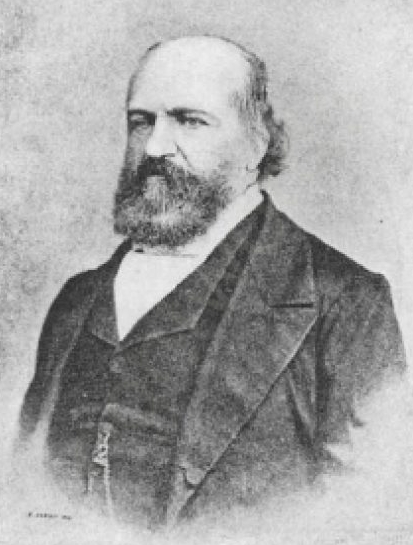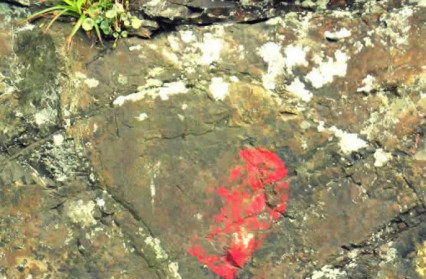Heather Williams introduces the fruits of an enormous and major new collaborative project that brings together treasure troves of archives to give a lasting impression of what the European travellers of the last 250 years thought of Wales.
While we know only too well what our closest neighbour has seen in Wales over the centuries – a land to conquer, a backward people speaking a doomed language, or a rural idyll of noble savages and sublime scenery – we know very little about what our Continental neighbours saw in it when they came here. What were European travellers to Wales looking for? What kind of Wales(es) emerge from the travel writing produced by these visitors?
These are some of the questions that are tackled by a major collaborative research project ‘European Travellers to Wales: 1750-2010’, generously funded by the Arts and Humanities Research Council, which brings together researchers at Bangor University, Swansea University and the University of Wales Centre for Advanced Welsh and Celtic Studies. Using expertise in European languages and cultures, travel writing and Welsh Studies, the team have first of all made visible hundreds of travel accounts about Wales written in European languages (mostly French and German) that had mostly been languishing in archives and libraries, many concealed by unpromising titles such as ‘Voyage en Grande Bretagne’ or more often ‘Voyage en Angleterre’. Patient and systematic trawling, aided by the phenomenal progress of digitization projects such as Gallica in France, have made it possible to feed around 250 travel accounts into the project’s freely-available, searchable database. Admittedly, some of these entries represent little more than fragments of text, such as Bartók’s post card to his sister from Aberystwyth – ‘It is a magnificent, hilly region, with a wild, rocky seashore, and there isn’t a single cloud in the sky’ – but the vast majority are full chapters or book-length studies of Wales and Welshness. Accompanying each database entry is an interactive map that plots the traveller’s itinerary in Wales, along with notes that provide a snapshot of the travel text. In the majority of cases a digital copy of the original is only a mouse click away, and where published translations into English or other languages are known this is indicated too. The aim is for anybody – local historian, school pupil, student, academic – to be able to find out what Europeans said about their part of Wales (by using the search by location function), or about an aspect of Wales that is of particular interest to them, maybe agriculture, costume or mining (all these and many more could be entered as search terms).
So what did they see? Here’s a taste of what the French have seen in Wales over the centuries.
In contrast to the gentleman scholar or antiquarian traveller from England, many travellers from the Continent, at least since the French Revolution, saw in Wales a refuge from war and revolution. Of the many priests and aristocrats who lived in exile in Britain during the Terror of the 1790s, some ventured to Wales. Novelist Madame de Genlis, sometime mistress of the duc de Chartres and governess to his children was (like many of the writers in the database) only in Wales en route to Ireland, and only stopped out of curiosity about the nature of the friendship between the Ladies of Llangollen. Nevertheless the Welsh landscape forces its way into her account of Plas Newydd via an Aeolian harp that transposes a tempestuous night into heavenly harmonies. What she sees in the landscape the next morning is order and symmetry; for her the Ladies occupy the summit of a mountain [sic.] that dominates sites of incomparable beauty: ‘Nothing compares to the beauties of the sites’, ‘One might think they reigned over the land’, with to the north a village and a forest, to the south a long river, and beyond an ‘amphitheatre’ of hills, all in stark contrast to the terrifying topsy-turvy situation at home. Louis Antoine Philippe d’Orléans, duc de Montpensier, was living in exile in Twickenham, and saw in Wales a landscape worth painting when he visited north Wales in 1806. He wrote, in English, about roads in a poor state of repair: ‘represent yourself if you can a Welsh road, full of rocks, of deep holes, interrupted with narrow bridges, with a ditch and a small stone-wall on each side’, which led to his own phaeton accident near Beddgelert! And a near collision with a woman on a donkey.
During the same era Wales was a prison for Octave de Barral, a ‘page de Napoléon’ who was marched on foot from Portsmouth to Abergavenny. As he had permission to walk up to one mile from the prison building (on condition that he returned on the tolling of the bell each evening), his memoirs provide descriptions of the surroundings and in particular of a brawl between miners and French prisoners on market day!

Alphonse Esquiros lived by his pen during his political exile, and wrote a shocking portrait of conditions in Merthyr Tydfil, which he visited in 1864 (‘children, half naked, play in the mud like young ducks’). While many continental visitors write, appalled, about such martyrs to industry, others couldn’t help marvelling at the poetic potential of the new 24-hour industrial spectacle, like La Villemarqué in Dowlais. Yet others in the nineteenth-century saw in Wales a world-leader in industry, and came to see for themselves the progress and processes being perfected in slate quarries in the north and ironworks in the south. These travellers, many of them students at elite French institutions on an early form of a year abroad, were in Wales to learn, to record in minute detail, and to report back to the mother country. Industrial espionage doubtless went on, and several visitors indeed mention their hosts’ fears of it in their accounts. Others saw the future of Europe in the feats of modern engineering on display in the Welsh landscape – Telford’s Pontcysyllte aqueduct and suspension bridge over the Menai are described in minute detail by many different visitors. The Musée des Arts et Métiers in Paris displays a scale model made by a student of the Menai bridge.
Some see in Wales a model for their own benighted culture to follow. Bretons see language revival, the strength of the Eisteddfod and devolution as inspiration to take back home, though many of the Breton travellers also praise the Welsh for their exemplary behaviour in being obedient Brits while at the same time keeping their ancient language and traditions alive. Wales is certainly seen as a land of history and poetry; very few of the travellers identified by the project have managed to describe a Welsh mountain without launching into a digression on poetry or history. Of course, many saw in Wales, quite simply a holiday destination, and have produced delightful portraits of their ascension of Snowdon, their visits to castle ruins, and useful accounts of numbers of tourists at various seaside resorts, interspersed with no end of jokes about the weather.
In the twentieth century, two world wars put an end to holidaying, but Europeans still found themselves in Wales. The project’s exhibition ‘EuroVisions’ (details below) has brought together a striking number of artworks by refugees in Wales. Of the 150,000 Belgians who fled to Britain in the wake of the German invasion in 1914, a high proportion came to Wales, and among these were a number of artists, musicians and scholars, who were invited by the Davies family of Llandinam, who dreamt of stimulating the arts scene in Wales while also providing hospitality. The ‘EuroVisons’ exhibition includes artwork by Valerius de Saedeleer, a painter who settled with his family in Rhydyfelin near Aberystwyth, and in Aberystwyth a talk by Dr Rhian Davies, Artistic Director of the Gregynog Festival will discuss the Belgian national fête concert given by the musician refugees in the Aberystwyth area on its centenary, 21 July 2015 at 7pm in Ceredigion Museum. Other refugees represented in the exhibition are Karel Lek, Heinz and Renate Koppel and Josef Herman, from Jewish families in Belgium, Germany and Poland.
In conclusion, many of these travellers don’t really see Wales at all! Generally, as we would expect in cross-cultural writing of any type, these texts speak volumes about the anxieties, personal or politico-national, felt by the foreign travellers. Many French travellers see in Wales evidence that Britain, or ‘Angleterre’ as they almost invariably call it, is a dangerous rival to France in the race of global economics. Another type of French visitor, and not only the Bretons among them, fail to see Wales for Brittany: Jules Michelet, the foremost French historian of his day, passing through north Wales on his way to investigate Ireland, sees in Wales a better version of ‘our poor Brittany’.
In order to broaden its frame of reference the project is holding an international conference on ‘Minority’ cultures and travel, at the National Library of Wales in Aberystwyth, from 14-16 September 2015. Further details at etw.bangor.ac.uk
The project’s exhibition ‘EwrOlwg/ EuroVisions’ is at Amgueddfa Ceredigion Museum from 11 July to 27 September 2015, before travelling to Swansea in autumn 2015 and Bangor in spring/summer 2016. A virtual exhibition will be available concurrently at http://eurovisions.bangor.ac.uk/ along with downloadable educational resources.











